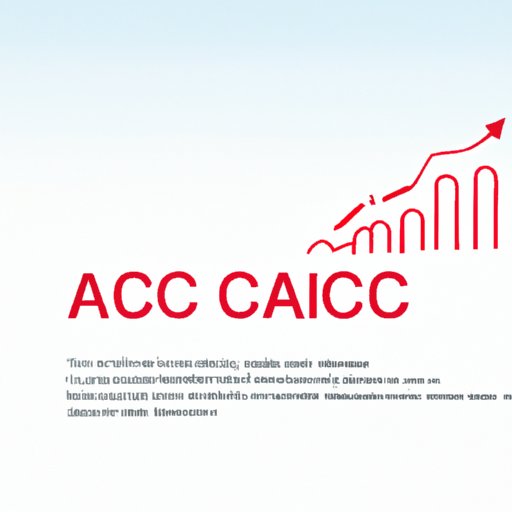Introduction
CAC stands for cost of customer acquisition, and it’s an important term in finance that helps businesses understand the cost associated with acquiring new customers. It’s also used in financial planning, as it allows businesses to assess the costs and benefits associated with different investments. In this article, we’ll explore what CAC is, its uses in finance, and how it can help you manage your finances.

Exploring CAC: An Overview of its Uses in Finance
What is CAC? Simply put, CAC is the cost of acquiring a customer. It’s calculated by dividing the total cost of acquiring customers by the number of customers acquired in a given period. This calculation can be used to measure the efficiency of marketing efforts and determine the return on investment (ROI) for different strategies.
Examples of CAC in financial planning include assessing the cost of customer acquisition for a new product launch or evaluating the cost of customer retention for existing products. CAC can also be used to evaluate the return on investment from different marketing campaigns and identify areas where more resources should be allocated.
Potential benefits of using CAC in financial planning include improved decision-making, increased transparency, and improved risk management. By understanding the costs and benefits associated with different investments, businesses can make informed decisions about their financial strategies and better manage their resources.

The Benefits of Using CAC in Financial Planning
One of the main benefits of using CAC in financial planning is improved decision-making. By understanding the costs associated with customer acquisition, businesses can make more informed decisions about their marketing strategies and allocate resources more efficiently. Furthermore, CAC can be used to assess the ROI of different campaigns and identify areas where more resources should be allocated.
Another benefit of using CAC in financial planning is increased transparency. By understanding the costs associated with customer acquisition, businesses can track their progress and adjust their strategies accordingly. This improved visibility helps businesses make better decisions and achieve better results.
Finally, CAC can help improve risk management. By understanding the costs associated with customer acquisition, businesses can assess the risks associated with different investments and make sure they are not taking on too much risk. This helps businesses make better decisions and avoid costly mistakes.
Understanding CAC: A Guide to its Advantages in Finance
Calculating CAC is relatively straightforward. To calculate CAC, businesses need to divide the total cost of acquiring customers by the number of customers acquired in a given period. This calculation can be used to measure the efficiency of marketing efforts and determine the ROI for different strategies.
When calculating CAC, businesses need to consider a number of factors, including the cost of advertising, the cost of sales staff, and the cost of customer service. These factors will vary depending on the type of business, so it’s important to take them into account when calculating CAC.
Once the CAC has been calculated, businesses need to interpret the results. Generally speaking, a lower CAC indicates that the business is spending less on customer acquisition and may be able to invest more resources in other areas. Conversely, a higher CAC indicates that the business is spending more on customer acquisition and may need to adjust its strategies.
How CAC Can Help You Manage Your Finances
CAC can be a valuable tool for managing finances. By understanding the costs associated with customer acquisition, businesses can identify areas where they can reduce costs and improve efficiency. This can help businesses save money and improve their bottom line.
CAC can also be used to identify potential investment opportunities. By understanding the costs associated with customer acquisition, businesses can identify markets where there is a high potential for growth. This can help businesses make more informed decisions about their investments and maximize their returns.
Finally, CAC can be used to improve cash flow. By understanding the costs associated with customer acquisition, businesses can identify areas where they can reduce costs and free up cash. This can help businesses pay down debt or increase their reserves.

CAC: The Key to Unlocking Your Financial Success
Using CAC in financial planning can provide long-term benefits. By understanding the costs associated with customer acquisition, businesses can make more informed decisions about their investments and maximize their returns. Furthermore, CAC can help businesses identify areas where they can reduce costs and improve efficiency. This can help businesses save money and improve their bottom line.
Ultimately, CAC is a valuable tool for managing finances. By understanding the costs associated with customer acquisition, businesses can make more informed decisions about their investments and maximize their returns. This can help businesses unlock their financial success.
Conclusion
In conclusion, CAC is a valuable tool for managing finances. It can help businesses make more informed decisions about their investments and maximize their returns. Additionally, CAC can help businesses identify areas where they can reduce costs and improve efficiency. By understanding the costs associated with customer acquisition, businesses can unlock their financial success.
(Note: Is this article not meeting your expectations? Do you have knowledge or insights to share? Unlock new opportunities and expand your reach by joining our authors team. Click Registration to join us and share your expertise with our readers.)
